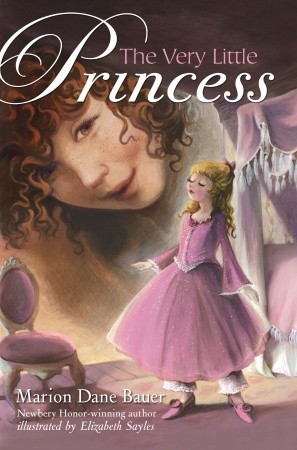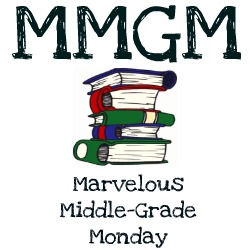The Very Little Princess is so very pink–and the version I had was MUCH more pink!–that I almost didn’t pick it up. Nothing against that particular color, but it’s not something I’ve ever identified with or felt was a fit for me. Once I did pick it up it took me several weeks to read it, but I’m glad that I did.

This is the story of Zoe who is going to meet her grandmother for the first time. The fact that she didn’t know she even had a grandmother is the first hint that something is not quite right in the tiny family of two that is her mother and Zoe. We’re given a second hint in the small mention that Zoe’s mother has been awfully quiet lately. However, the book stays solidly in Zoe’s perspective as regards to her family’s challenges and never slips into some kind of adult discussion about depression or the kinds of things that would make a mother mentally or emotionally go away for a time. In fact, for almost the entirety of the book Zoe spends her time getting to know a gorgeous princess doll found in her mother’s old room, who is woken up by Zoe’s single tear. They have adventures in the garden, negotiate their relationship, and explore the magic of how the doll has come alive. In the background Zoey’s mother and grandmother argue, make Zoe lunch, and ply her with a bowl of ice cream. And then Zoe’s mother goes away, leaving Zoe with her newly discovered grandmother.
There are very few books in this slim, early reader category that deal with something this dark and challenging, but of course many children of this age have experienced exactly Zoe’s situation or one similar to it. What this book offers to these children is the idea that they are not alone, and that even in these kind of dark and challenging circumstances there can still be magic. Such a needed and hopeful message! Children always need hope, and magic, and wonder, and they need it especially when their days are dark or when the fabric of their lives seems to be coming unraveled.
On a personal level I found the narrative authorial voice, speaking directly to the reader, a bit intrusive. However I suspect that the intended audience would enjoy it as the voice of a Storyteller and not be the least bothered by it. I also really enjoyed the illustrations throughout, and the quirky perspective of the princess doll as well as her growth character arc.
All in all, a very slim book and super quick read that packs a powerful punch without ever becoming preachy or message-oriented. I highly recommend it!
Now, let’s see what Apricot-kitty thinks:
 “It was a good book, but I certainly feel for that poor doll! To be be barely bigger than a mouse and moreover have to depend on sloppy salty tears in order to wake up? It’s a good thing she wasn’t the kind to sit back and take whatever life dished out, because circumstances like those require backbone.”
“It was a good book, but I certainly feel for that poor doll! To be be barely bigger than a mouse and moreover have to depend on sloppy salty tears in order to wake up? It’s a good thing she wasn’t the kind to sit back and take whatever life dished out, because circumstances like those require backbone.”
A very cat perspective. Truth be told, I found the princess doll a little off-putting, but she totally fits the story and–as Apricot points out–is made sympathetic by her circumstances. And anyway, despite the title, this is really the story of how Zoe comes to know the princess doll, and how they grow together. It’s truly quite marvelous, to find a story so slim but so perfectly balanced in delivery, so I plan to return to Marion Bauer’s blog and take a long look at her writing tips. Whenever I find a story pulling off the unexpected, I like to spend some time with the author and see if I can peek inside their tool box.
What books have you read lately that surprised you? Tell me in the comments, and take a wander through the various Marvelous Middle Grade Monday giveaways, spotlights, reviews and interviews, all collected on our host Greg Pattridge’s blog!

Completely Full Bookshelf
Suzanne
Greg Pattridge
Suzanne
Natalie Aguirre
Suzanne
Joanne R. Fritz
Suzanne
Patricia Tilton
Suzanne
Rosi Hollinbeck
Suzanne